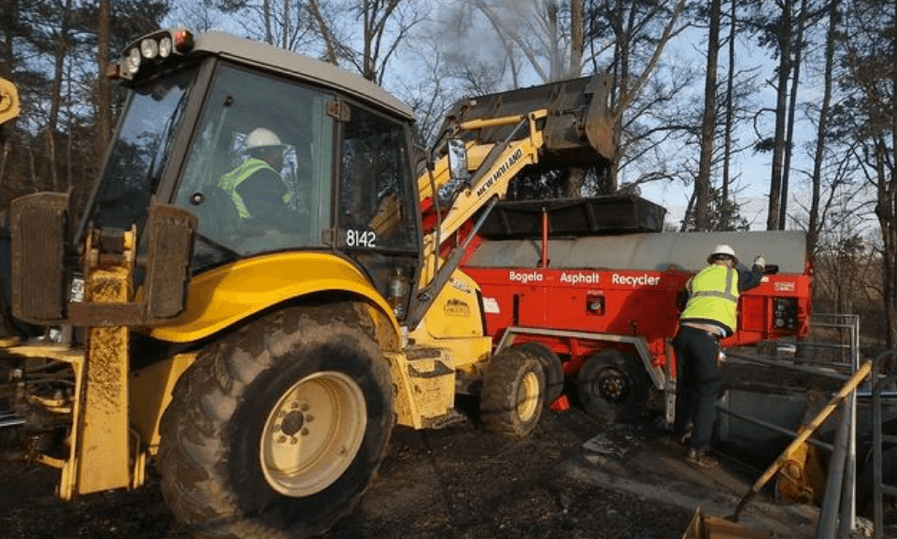
18 Mar Gastonia’s Pavement Recycling System Starts With 10 Tons in the Morning!
The city of Gastonia’s road crews start the day in a jam. And starting the day behind the 8 ball isn’t good for anyone. Why was the team off to a rocky start? Winter means freezing morning temperatures. Plus, cracked and broken streets meant the team needed to get to work. The solution: a pavement recycling system powered by a Bagela Asphalt Recycler!
What was causing the jam and how does a Bagela asphalt recycling machine help?
Due to the cold temperatures, the standard asphalt plants needed time to get up and running (until it warmed up a bit), but road crew needed asphalt to make emergency repairs. Plus, the closest plant was in Kings Mountain!
Edward Stroud, the field supervisor responsible for the two five-man crews that fix the roads explains how a pavement recycling system solves the town’s problem.
“We usually make about 10 tons first thing in the morning. We can make 10 tons an hour, but we can only hold 8 tons at a time in our truck.”
Additionally, beside the temperatures, the outside facilities also have weekend limitations. But, residents still need drive during the weekend, so the road crews remain busy throughout the week and winter. For example, crews constantly work to improve the road conditions and so far repaired more than 114 potholes in city limits.
How does a pavement recycling system work?
For Stroud, his crew and the city of Gastonia, their pavement recycling system starts with a Bagela Asphalt Recycler. The city bought the pavement recycling machine, which ran about $185,000, but quickly reaped the rewards and saw a prompt payback period. Dale Denton, the city of Gastonia’s Public Works Department division manager shares the savings.
“This piece of equipment saves the city $60,000-$80,000 annually in material cost alone.”
In particular, the asphalt recycler gets heavy use during the winter. Residents can attest to the almost daily smoke coming from the city lot at the northern terminus of Broad Street. Since 2013, the city has been making its own asphalt.
How does the machine save so much?
Stroud explains how the pavement recycling system works within the town’s operations.
“We can make our own mix and do a job before they start up, and then we’ll run a truck out to the plant.”
Plus, the city leverages existing roadwork to provide the raw materials for the asphalt recycler. The road crews simply haul the broken asphalt (where it is spotted within the city limits) back to the North Broad facility. The crew sifts the materials, then separates the components into asphalt, dirt, sand and more (all of which gets used for other city projects). Denton explains the process.
“When material comes in, we’ll put it on the shaker table, and we’ll separate out the dirt, asphalt and debris in different piles, so it basically filters out the asphalt portion for us, and then we reuse the dirt. We’re actually recycling more than just asphalt — dirt, sand, smaller rocks and stone. It’s reusing material that was already down and adding a little bit of new to it.”
Watch the pavement recycling system in action!
Interested in learning more about how Gastonia leverages their Bagela asphalt machine? The Gaston Gazette shares the original story. Intrigued and want to learn more about how pavement recyclers can help your town or city?



No Comments